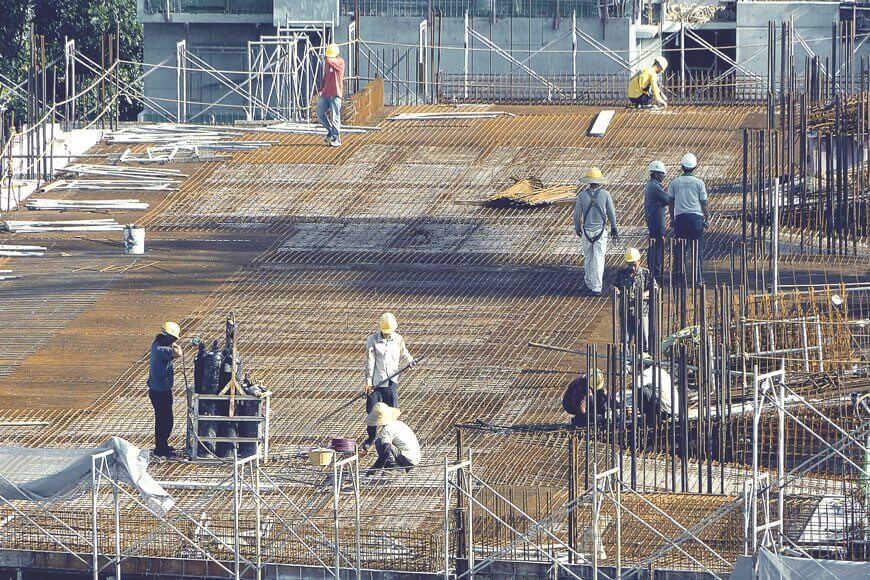As the construction industry continues to embrace digital transformation, understanding how to seamlessly incorporate software tools into your workflow can significantly enhance efficiency, productivity, and project outcomes. So, let’s explore the importance and benefits of integrating construction software into your existing construction processes.
Free eBook: Unveiling the Path to Digital Transformation in Construction
Why do you need construction software integration?
The construction industry is ever-changing, and to keep up with the competition, companies need to keep up with technology. Construction software integration is pivotal for project managers, contractors, and other industry professionals.
It’s not about keeping up with trends; it’s about having a strategic response to the complexities and challenges of modern construction projects.
- Construction projects are increasing in intensity. Between the myriad of stakeholders, intricate designs, and advanced materials, integrating construction software helps streamline those complexities. Construction software integration offers a way to manage tasks, timelines, and resources in a single platform.
- Cost overruns are out of control. They have been for years—that’s why industry professionals are looking into construction software integration. The right platform makes accurate budgeting, expense tracking, and forecasting simple to avoid overruns and poor decisions.
- Communication is a limiting factor of efficiency. Sick of running from the office to the site? So were we; it wastes time and resources that you don’t have. With construction management software, teams can share information, update reports, and communicate from anywhere at any time.
Can construction software integration really make a difference?
Leading construction company Thomas & Piron took the digital transformation leap and integrated construction software into its daily processes. And the results were incredible.
In their search to create a standardised work environment that allows their construction teams to adapt to new projects without starting from scratch every time, Thomas & Piron implemented LetsBuild Aproplan.
What happened next? The company eliminated redundant data entry, took human error out of the equation, and found a simple way to gain a comprehensive overview of each project. Overall, managers and supervisors were able to shift their focus from paperwork to the on-site activities that matter most, increasing efficiency and productivity.
So, can working toward digitalisation and integrating construction software into your processes really make a difference? Yes – our case studies speak for themselves.
More to read: 5 Common problems between contractors and subcontractors and how to avoid them

What types of construction software are there?
There are countless types of construction software that you can implement to improve various processes both on and off-site. For example:
- Building information modelling (BIM) software addresses design and planning challenges by allowing for better collaboration, reducing errors, and fostering better communication among stakeholders.
- Project management software streamlines overall project operations by facilitating communication, task assignment, document management, and team collaboration to ensure everyone stays on the same page.
- Quality, health, safety, and environment (QHSE) software helps you prioritise safety and compliance by maintaining high standards, managing inspections, and documenting incidents.
- Construction scheduling software tackles timeline management challenges by creating realistic schedules, identifying efficient resource allocation, and foreseeing potential delays so you can take proactive measures.
Best practices for successfully integrating construction software into your processes
Successfully integrating construction software in your company is a huge step toward optimising productivity and efficiency. Adopting these best practices will ensure a smooth transition that minimises disruptions and maximises the benefits of the construction software you choose.
- Check for compatibility with your existing systems. Before integrating construction software into your processes, conduct an assessment to ensure it will work seamlessly with your existing systems and workflows, whether they’re your current accounting systems, content management systems, or any other critical applications.
- Invest in training and change management. You can integrate the best software available, but it doesn’t mean anything if no one uses it. Adequate training and change management strategies can reduce resistance to the new technology and ensure that it helps your employees, not hinders them.
- Look for software that scales with your company. You don’t want to have to switch up all of your software as your projects and business grow because the platform you chose doesn’t scale alongside your needs. Scalability is essential for long-term viability and maintaining adaptability to the industry’s ever-evolving demands.
- Establish a feedback mechanism. You won’t get it perfect the moment you implement construction software, so establish a way for users to give you feedback. Then, use this feedback to fine-tune your processes and address any challenges employees face during daily operations.
You may also like: What is COSHH and how do you manage it?
Digital transformation in construction starts here
As we navigate the dynamic landscape of the construction industry, digital transformation and integrating software solutions are key to achieving efficiency, productivity, and innovation. Whether you’re looking to implement better communication methods than WhatsApp or looking for ways to streamline your daily operations, there’s a LetsBuild platform to help you do it.
- Manage QHSE, defects, and handovers with LB Aproplan.
- Mitigate risks and manage repetitive projects with LB Geniebelt.
Your digital transformation starts here – book your personalised demo of any LetsBuild software to see how it can improve your construction processes through digitalisation.




